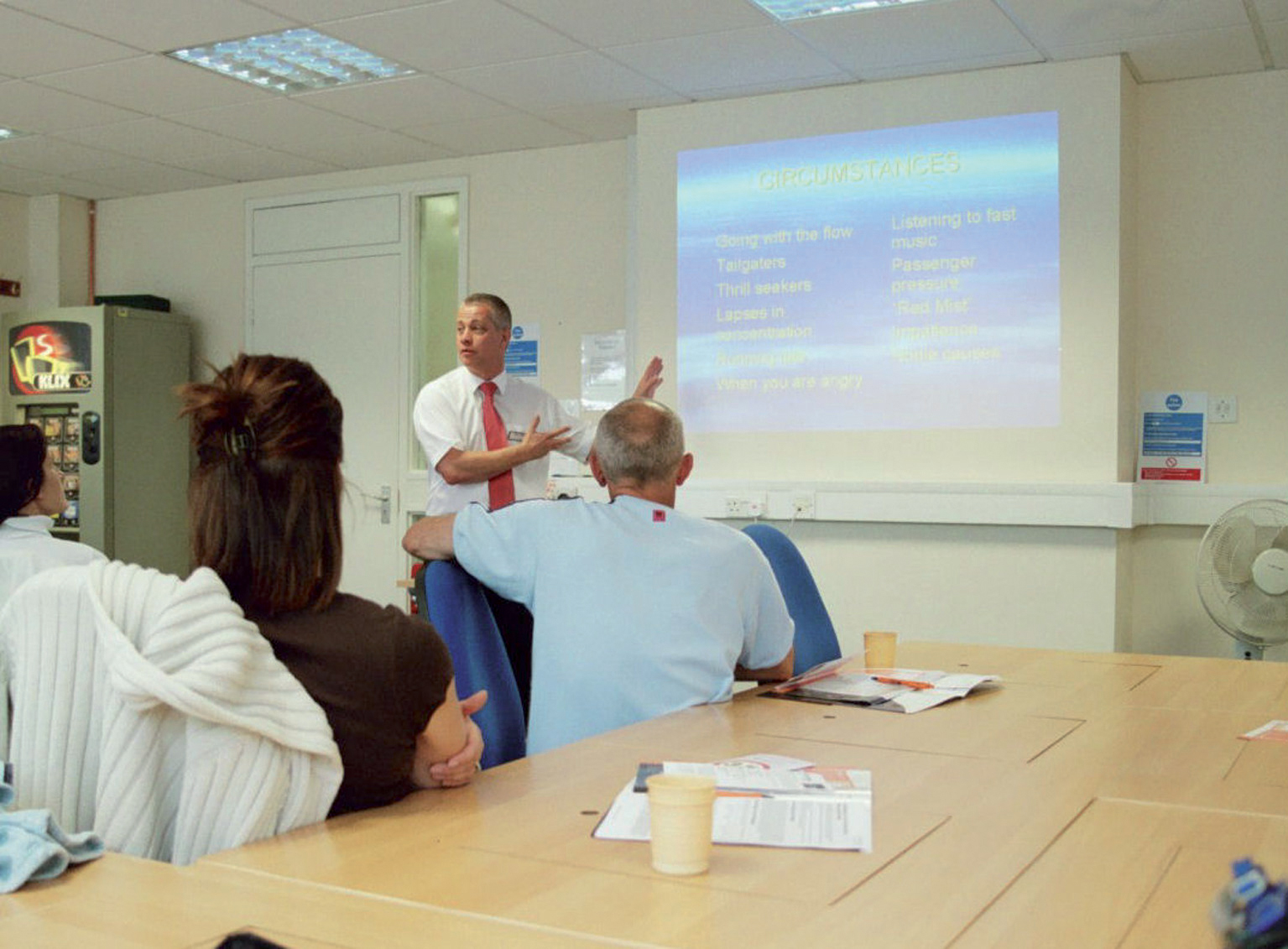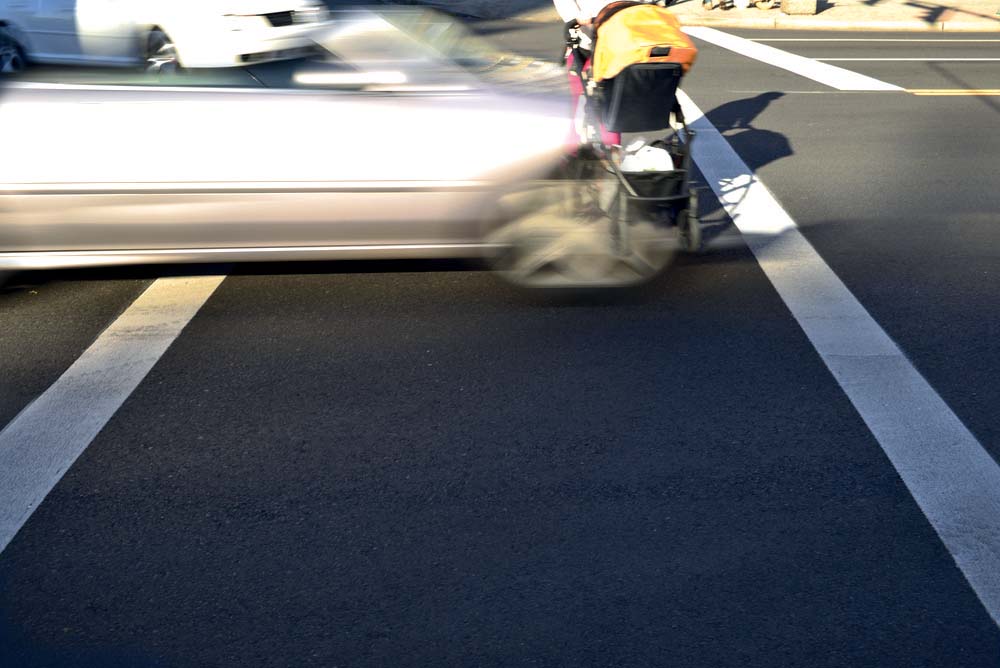Andrew Rooke and Dave Marples of Technolution B.V. take a look at what can be done to address a long-standing problem: the all-or-nothing approach of automated enforcement. To start, a brief history of speeding: on 14 November 1896, the first Veteran Car Run was staged in England from London to Brighton. It was organised to celebrate new British legislation to raise the maximum speed of vehicles from four to 14mph while also removing the need for a person waving a red flag to walk in front of the car and wa
Andrew Rooke and Dave Marples of
Prior to the start of the run a red flag was ceremonially burnt and the ongoing tension between different classes of road users crystallised. From that moment forward the motorist, cast (variously) as socially irresponsible if not downright villainous, has been at odds with other road users.
Vehicle speed is the most easily quantified subject of disagreement; slower vehicles are certainly safer but decreasing speed has an impact on utility and, to some degree, enjoyment of the driving experience too.
It is worth noting that there is little wrong with speed itself - that argument is far too simplistic. Inappropriate speed, be it 30mph past a school at turning-out time or 50mph on the motorway in heavy fog is, however, a fundamental problem and one that it has been very difficult to get machines to recognise automatically. Similarly, there's little to argue against an appropriately trained driver doing 90mph down a clear, dry motorway in good visibility. But that wouldn't stop the camera giving you something to remember the occasion by...
From 1865 to the present day, governments around the world have recognised that there is a need to control the vehicle and the motorist. By the close of the 19th Century it had already been recognised that speeding was an issue. In the UK, the Automobile Association was formed to protect members from being caught by warning them of the presence of police patrols. 30mph speed limits for built-up areas were introduced in 1934 when it was recognised that drivers were insufficiently educated for them to make informed choices.
The detection of the offender became a time-consuming process, with two forms of confirmation required for each offence before the offender could be prosecuted. Pressure mounted on police forces to ensure that motorists complied with limits. Technology was employed with fixed distance timing radar meters, the radar gun and various forms of camera automation progressively making the detection of offenders easier.
These ever-increasing levels of sophistication in capture technology have meant that the proportion of detected offending drivers has increased while little effort has been put into dealing with the root of the problem itself: the driver.
The processing of offenders
In the UK, speeding has always been seen as a criminal offence to be dealt with by the police. Initial penalties were in the form of fines. Latterly, a secondary penalty system was introduced which imposed additional sanctions for repeat offenders.With casualty figures continuing to rise, the calls from road safety groups for more enforcement grew. Technology came to the
rescue with the introduction of various forms of camera systems to provide remote enforcement. From the perspective of improving enforcement these were extremely efficient; machines can always be on duty, they never blink and are completely impartial in their metering of justice. Conviction rates rocketed.
At no stage was detailed thought given to education and rehabilitation. Punitive measures were considered to be sufficient to encourage future compliance which, as any parent will tell you, is not usually the best way of encouraging best behaviour. Criminologists have spent many years pondering on the most effective ways of rehabilitating other classes of offender but little thought has been given to the errant motorist.
In early 2000, diversion schemes began to offer an alternative to prosecution. Far from being soft options, they provide the offending driver with real feedback on the consequences of his or her actions as they assess the quality of driving and seeking to modify behaviour.
The adoption of remote enforcement, conditional offer fines and the penalty point system has criminalised a fair proportion of the British motoring public where help and education could have been offered in the first instance. How can the imposition of a fine and penalty points as a first step make for a better driver? Wouldn't an assessment of the skills and abilities of a driver together with re-education be more effective in the drive to reduce casualties?
The imposition of automated detection of excess speed and other offences has seen huge increases in the drivers caught - around one in eight drivers in the UK now have points on their licence. However, casualty rates are not showing the reductions that were anticipated and whole segments of society are ill-disposed toward road safety which is often viewed as revenue generation. What is the next step? Can further punitive measures really be the answer?
Technology to the rescue
Why can't technology, one of the key reasons for the huge increase in convictions, also be the solution the problem?The modern motorist is checked, re-checked, monitored and controlled. Accidentally go into a bus lane, do 36mph in a 30mph limit, pick up your phone to check the battery level, forget to put on your seatbelt or have a brake light not working and you're liable to find yourself on the wrong side of a heavily regimented process with precious few opportunities for showing genuine remorse or contrition and even fewer opportunities for leniency; our punitive processes, designed for a different day of lesser enforcement and more manual leeway, haven't kept up with the change to blanket policing.
However, we no longer live in a world where the only means of exerting control over the individual is by punitive measures. Maintenance of historical records and past behaviour are great predictors of the future; credit reference agencies such as Experian and Equifax use individuals' past history of financial piety as proof that they are worthy (or not) of being lent that new sofa while they save up enough money to pay for it. In our brave new world of buy now, pay later, we have been forced to find risk predictors which can be used to stand for an individual's credit worthiness, so why shouldn't we do that in the vehicle domain too? If a driver makes a mistake for the first time, can't it be considered to be just that rather than the trigger for an over-zealous judicial process?
In this context, catching a speeding motorist and fining them has parallels to not allowing someone to buy the sofa simply because they don't have the money in their wallet. Spot samples, legally valid though they may be, simply aren't representative of the behaviour of an individual... how many times have you heard "It was the first time I'd been over 30 all day"? Why shouldn't we deliver measures that allow us to qualify the truth of those statements?What we're suggesting is not a measure that would allow drivers to speed for a certain proportion of the time, but a 'credit meter' that would allow their historic good behaviour to be taken into account when a transgression occurs; a 'no-claims discount' for speeding if one must which is easily extensible to other motoring metrics, too. But let's start with the easy ones first (and note that we sidestep the entire issue of the appropriateness or otherwise of certain speed limits).
Long-time companion
The practical implementation would probably take the form of a device that sits in the vehicle and monitors the way in which it is used, totting up 'credits' when a driver's behaviour deserves it and deducting them when it doesn't. We have the technology to do such things and in a way which is not self-incriminating or which leads to privacy concerns: a simple numeric score wouldn't leak much information about the driver besides the quality of his or her driving, which is exactly what we are trying to determine.It would be easy to build up a credit score for all of the time that the user remains within the speed limit, doesn't corner too hard or keeps a safe distance from the car in front, quickly depleting that score when the rules are broken. Not only would that give a law enforcement official a good litmus test of the behaviour of the driver but it would also serve to encourage ongoing compliance rather than just having drivers hit the brakes when they pass a speed camera.
Such a technology doesn't always need to be pre-event either - once drivers have collected points on their licences, why shouldn't they be able to work them back off by demonstrating beyond any reasonable doubt that they are safe to be on the road? That resonates more comfortably with the punitive crowd - "If you don't behave we'll put a box in your car to monitor you" - but it could still be done in a positive way that leads to driver rewards and encouragement of compliance without too much difficultly.
Such proposals will be uncomfortable to some and it is true that technology, left unchecked and implemented with a heavy hand, has the potential to create such an environment of heavy surveillance and draconian policing which leads to resentment and, eventually, to civil disobedience and social malaise. There is, however, no reason why that same technology, suitably tempered, can't be used to improve our lot. We all make mistakes, but we need to find means by which the times that we didn't can be taken into account too. Otherwise, at this rate we'll end up with the re-introduction of the red flag...











